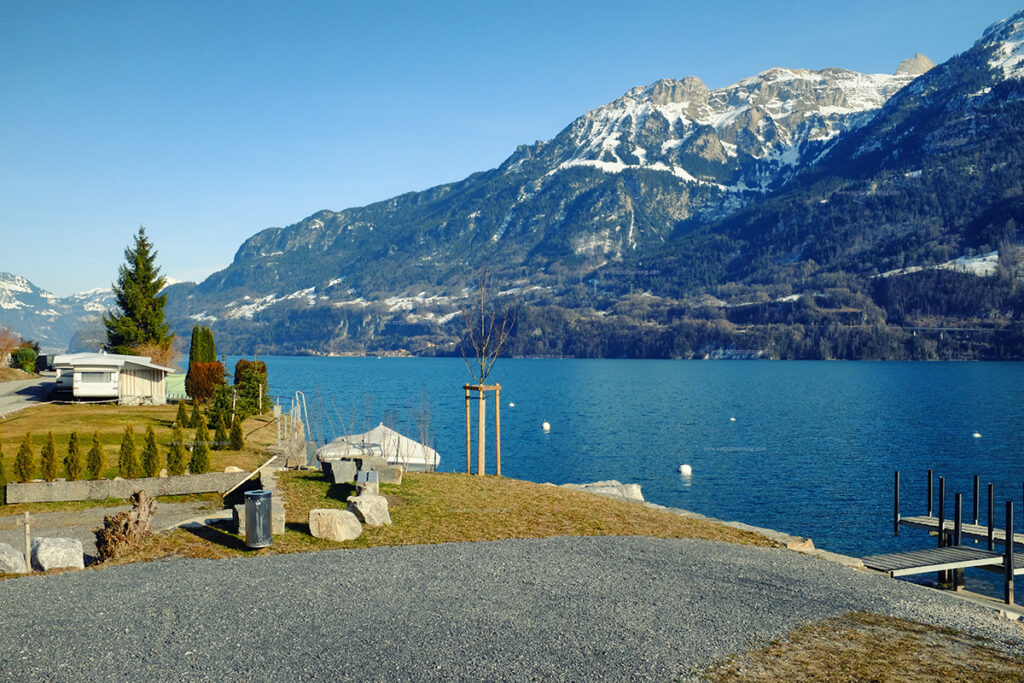An Enchanting Swiss Village Nestled Amidst Breathtaking Landscapes
Nestled along the northern shores of Lake Brienz, the Swiss village of Ringgenberg offers a serene escape for travelers seeking natural beauty and historical charm. A notable landmark within this picturesque setting is the area known as Säge, which serves as a starting point for various local adventures. The village’s rich history, combined with its stunning landscapes, makes it a must-visit destination for those exploring the Interlaken region.
Historical Background

The origins of Ringgenberg trace back to neolithic times, with archaeological findings indicating early settlements in the area. The village’s name is derived from “Rinchenwile,” first recorded in 1240, stemming from the Old High German personal name “Rinco” or “Rincho” and the place name ending “-wilari” (meaning little town). The modern name evolved by combining “Ringgenwil” with “burg” (castle), reflecting the medieval castle that once stood prominently in the village.
In 1230, Kuno von Brienz was appointed overlord of the Lake Brienz area by Emperor Frederick II and constructed the castle at Ringgenberg. The noble family adopted the village’s name, becoming the Counts of Ringgenberg. Throughout the 13th century, the family expanded their influence, often at the expense of the Interlaken Monastery. However, by the mid-14th century, their fortunes declined, leading to parts of the estate being sold to the monastery. In 1381, the castle was burned and plundered by troops from the Canton of Uri, marking the end of the family’s prominence.
The village played a role during the Protestant Reformation in the 16th century. In 1528, Bern adopted the new faith and sought to impose it on the Bernese Oberland. Ringgenberg joined other villages and the monastery in an unsuccessful rebellion against this change. After Bern’s victory, the monastery was secularized, and its lands, including Ringgenberg, were annexed into the Bernese bailiwick of Interlaken.
The Church and Castle Ruins
One of the village’s most iconic landmarks is the church built within the ruins of Ringgenberg Castle. Constructed in 1670 under the direction of architect Abraham Dunz, the church incorporates the castle’s remaining walls and one of its towers. This fusion of ecclesiastical and medieval architecture stands on a hill between the village and the lake, offering panoramic views of the surrounding landscape. Both the church and the castle ruins are recognized as Swiss heritage sites of national significance, reflecting their historical and cultural importance.
Natural Attractions

Ringgenberg’s location offers visitors a wealth of natural attractions. The nearby Burgseeli, a small lake nestled between Ringgenberg and Goldswil, is a popular spot for swimming and picnicking, especially during the warmer months. The lake’s tranquil waters and surrounding reed beds provide a habitat for various bird species, making it a haven for birdwatchers.
Transportation and Accessibility

Ringgenberg is well-connected to the broader Interlaken region, making it accessible for travelers. The village is served by the 102 bus route, which runs between Ringgenberg, Säge and Interlaken West Bahnhof. This route includes 24 stops, passing through scenic landscapes and neighboring villages, with a total journey time of approximately 19 minutes. The bus operates daily, with services starting as early as 06:05 and continuing until 23:27, ensuring flexibility for visitors.
Ringgenberg, with its rich history, architectural landmarks, and natural beauty, offers a quintessential Swiss village experience. Whether you’re exploring the historic church and castle ruins, enjoying the serene waters of Lake Brienz, or simply taking in the breathtaking alpine scenery, Ringgenberg provides a tranquil and enriching destination for all who visit.